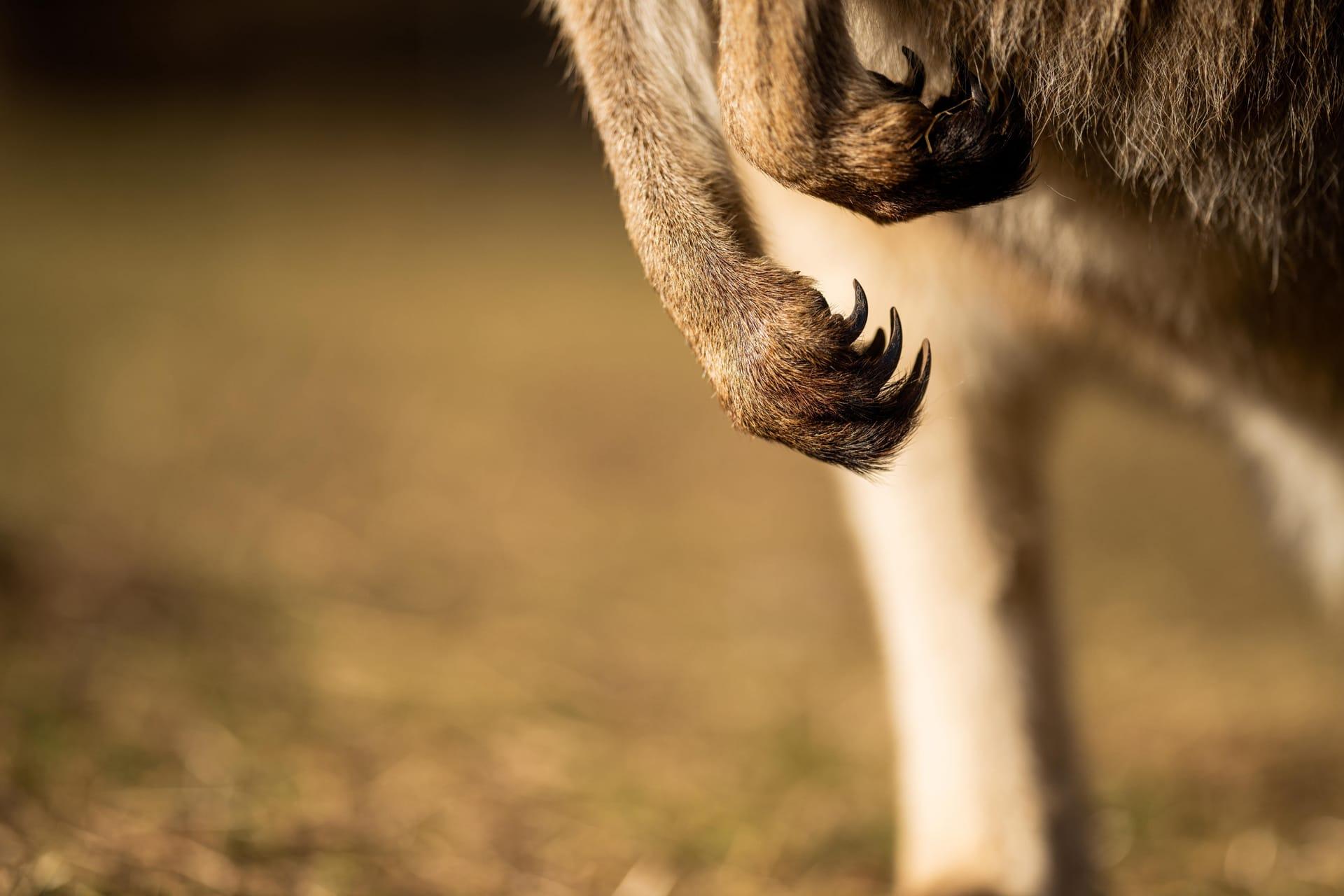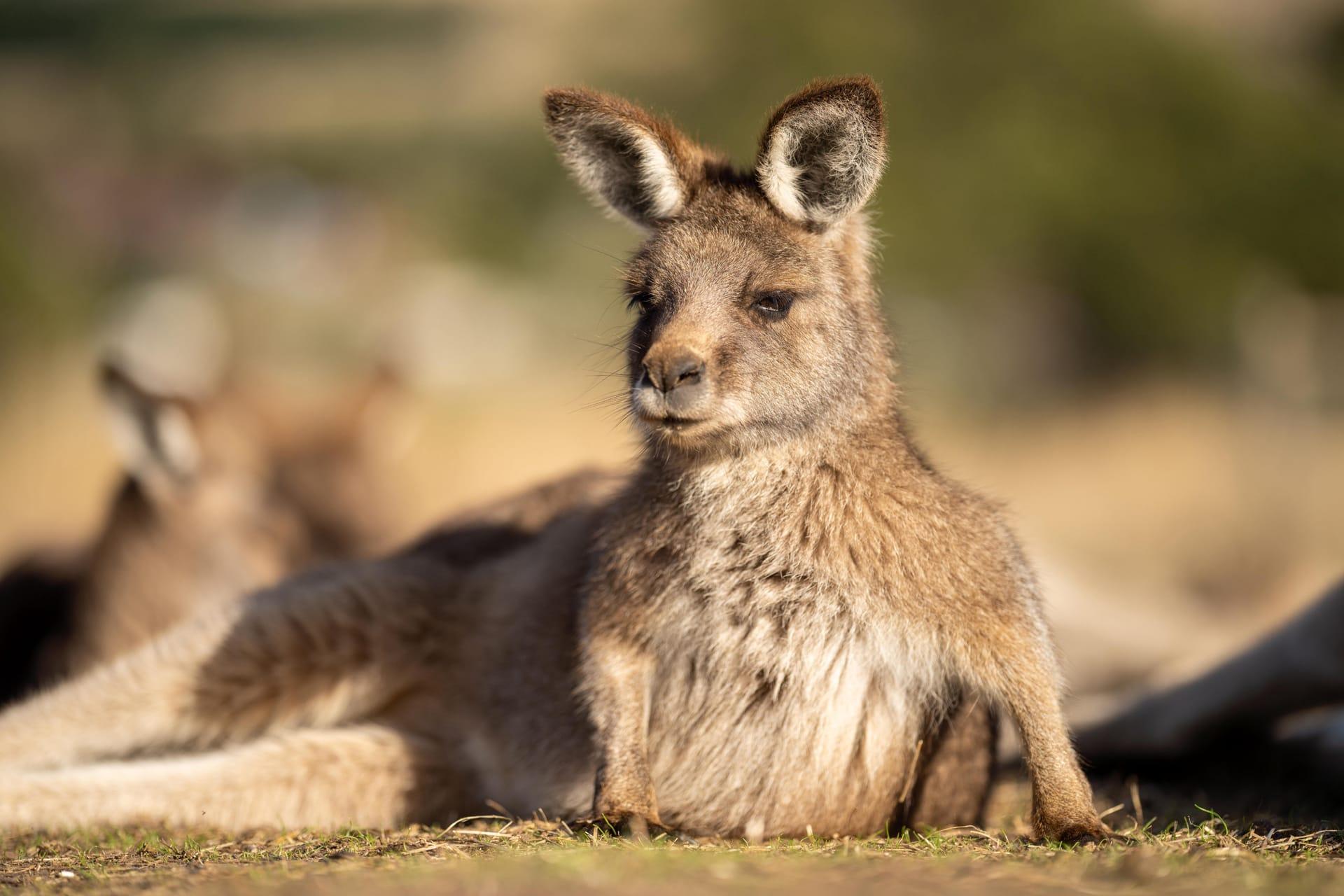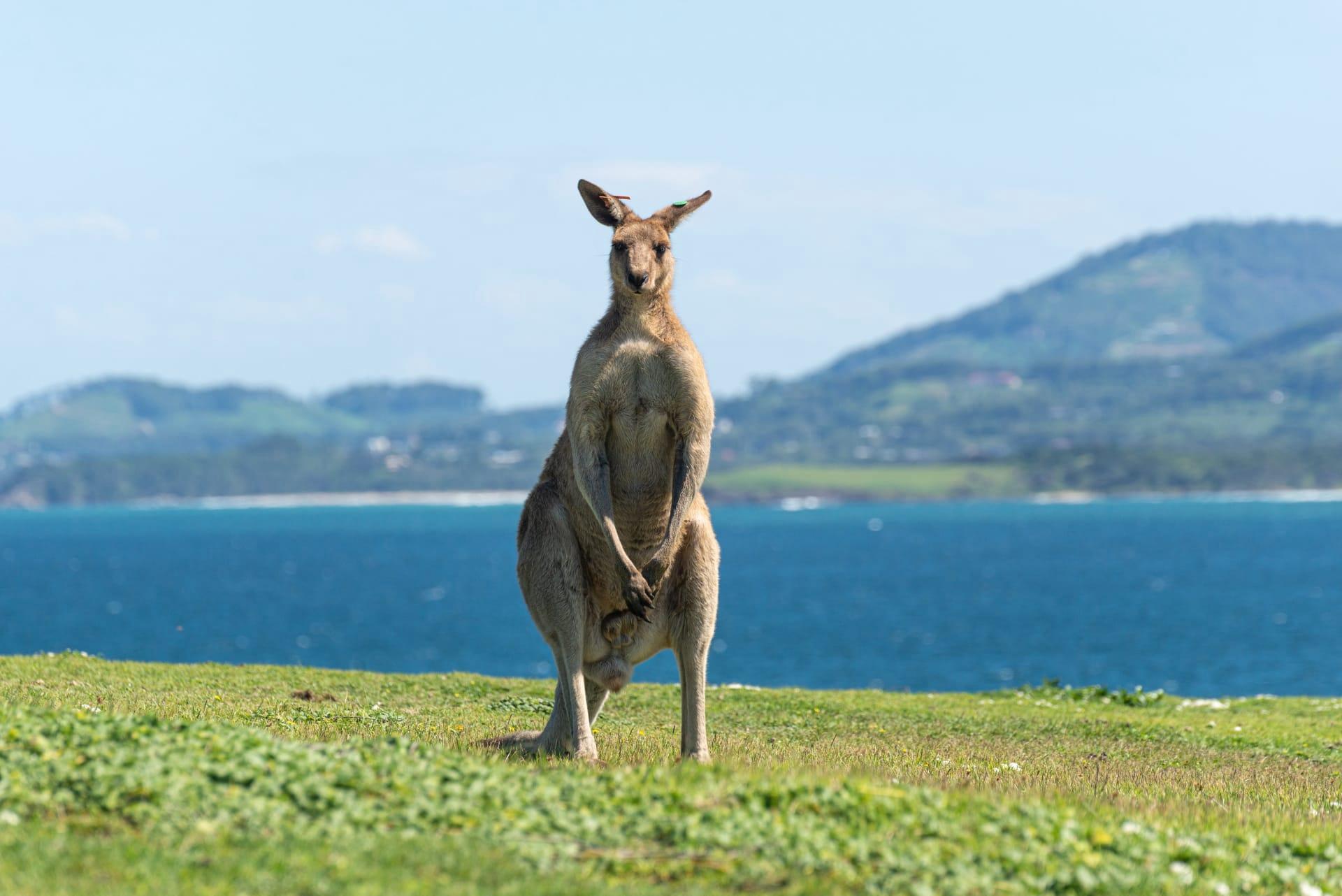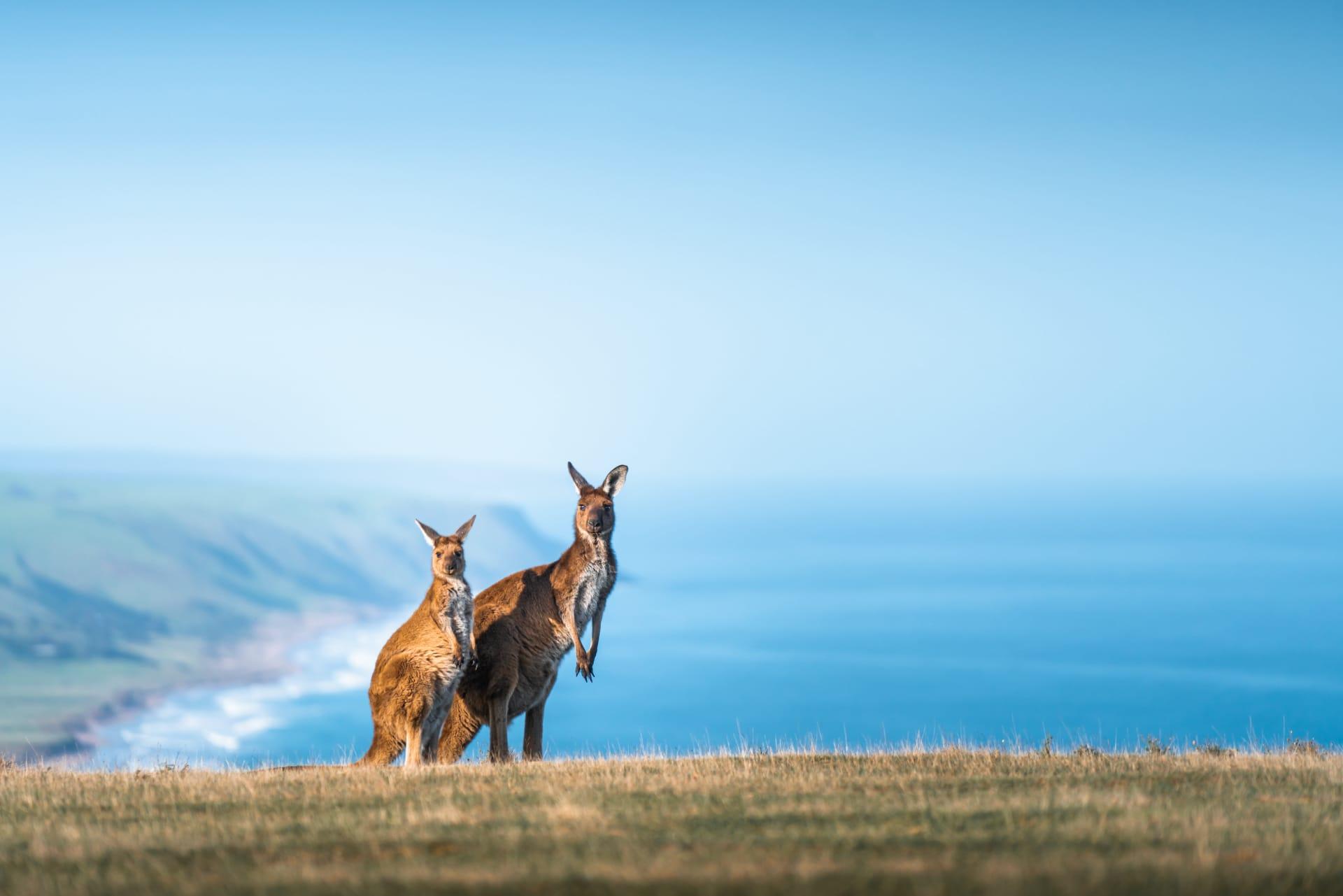1
Kangaroos are renowned for their powerful hind legs and large feet, adapted for leaping. An adult kangaroo can leap over 9 meters (30 feet) in a single bound! This is about the length of a school bus. The force behind their jump comes from the tendons in their legs, working like rubber bands. When hopping, they can reach speeds of up to 35 miles per hour (56 kilometers per hour) and maintain a speed of 20-25 miles per hour (32-40 kilometers per hour) over long distances.
Another remarkable feature of kangaroos is their swimming ability. Despite being land animals, kangaroos are skilled swimmers. They use their powerful hind legs to propel themselves through water, moving both legs together. This is different from their on-land movement where they move their legs independently. They often swim to escape predators or to find new grazing areas, and can cross rivers and lakes when necessary.

2
Kangaroos have a unique method of thermoregulation. On hot days, they lick their forearms, where the blood vessels are close to the skin. The saliva evaporates, cooling the blood in these vessels, which then circulates back into the body, reducing their overall body temperature. This natural cooling system is efficient and vital for their survival in hot Australian climates.
Their diet is another fascinating aspect. Kangaroos are herbivores, primarily feeding on grass and other vegetation. They are hindgut fermenters, meaning their digestion process is similar to that of horses and rabbits. This method of digestion allows them to extract maximum nutrition from their food. Interestingly, kangaroos produce very little methane compared to other herbivores like cows, making them more environmentally friendly in terms of greenhouse gas emissions.

3
Kangaroo mothers have extraordinary reproductive systems. They have a unique ability known as embryonic diapause. This allows them to pause the development of an embryo until the previous joey is able to leave the pouch. It's a survival strategy to ensure continuous reproduction even in challenging conditions. When conditions are favorable, the paused embryo resumes development.
Their pouch, which is a well-known feature, plays a crucial role in the development of young kangaroos, called joeys. When a joey is born, it is only about the size of a lima bean and is essentially underdeveloped. It crawls from the birth canal to the mother's pouch, where it latches onto a nipple and continues to develop. This pouch period can last for about six to eight months, during which the joey grows and develops eyes, ears, and fur before it starts to explore the outside world.

4
Kangaroos have excellent hearing and can move their ears in different directions without moving the rest of their head. This adaptation helps them to detect predators or other dangers in their environment. Their hearing range is broad, allowing them to hear both low and high-frequency sounds, which is crucial for survival in the wild.
Another interesting fact is their social structure. Kangaroos often live in groups known as mobs, which typically consist of 10 to 15 individuals. The mob provides safety in numbers as they can alert each other to danger. Within these groups, there is a hierarchy, usually dominated by the largest male. The social interactions within these mobs, including grooming and play, are vital for social bonding and establishing the hierarchy.

5
Kangaroos have a unique way of conserving water. They rarely sweat and primarily release heat through panting. Their kidneys are highly efficient, producing concentrated urine to minimize water loss. This adaptation is crucial for survival in the arid and semi-arid regions they often inhabit.
Their tail plays a vital role in their mobility. It is not just for balance; kangaroos use their strong tails as a fifth limb. When they walk, they place their tails on the ground and use them to help propel their body forward. This unique movement, called "pentapedal locomotion," is rarely seen in other animals. The tail is so strong that it can support the kangaroo’s entire body weight.